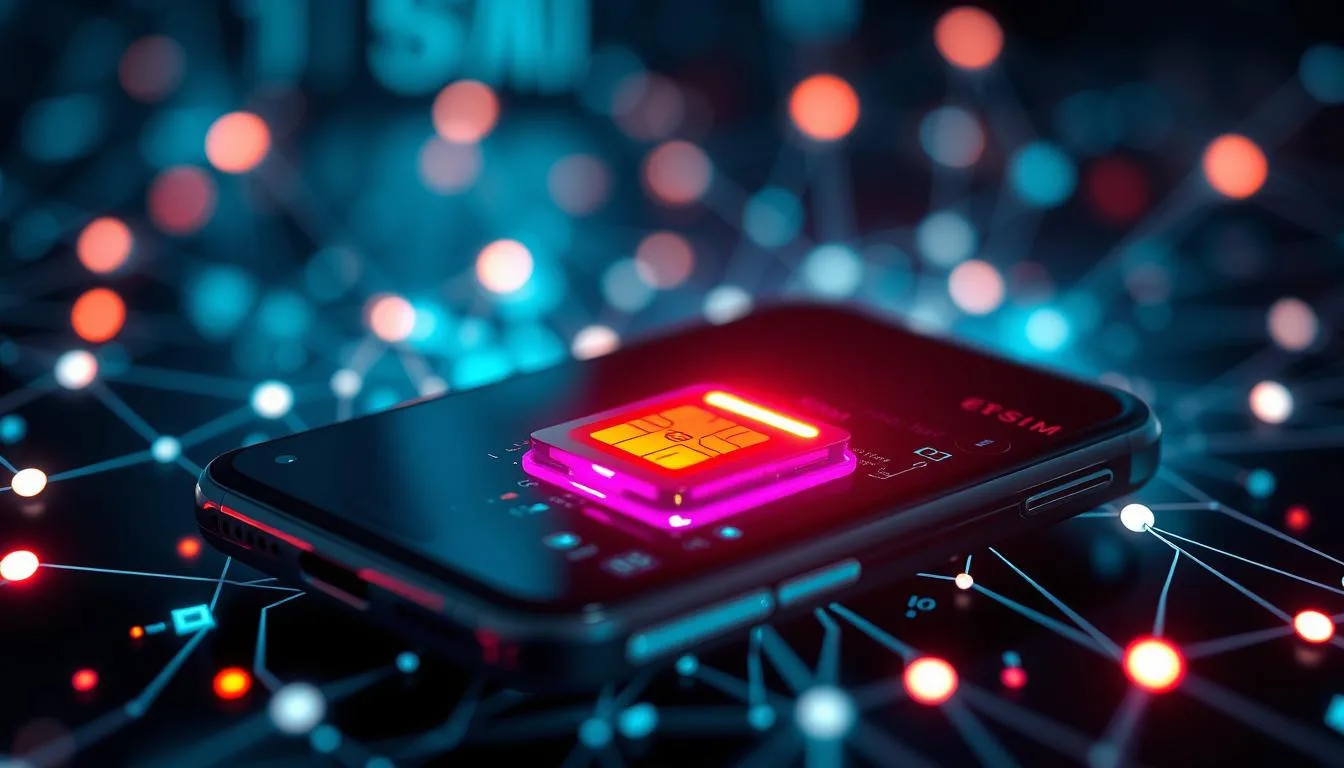eSIM USA
Does an eSIM Have a Phone Number?
If you’ve switched to an eSIM, you might ask, does an eSIM have a phone number?
Traditional SIM cards come with a phone number, but eSIMs don’t by default. If you do need to make calls you can use VoIP services and messaging apps.
We’ll look into how eSIMs work and how they help with communication without a traditional phone number.
Key Takeaways
- An eSIM does not automatically have a phone number assigned.
- You can use VoIP services and messaging apps on an eSIM.
- eSIMs are ideal for travellers wanting flexible communication options.
- Traditional SIM cards usually come with a phone number by default.
- eSIM technology offers advantages for multiple device connectivity.
What is an eSIM?
eSIM technology, or embedded SIM, is a big change in mobile networks. It replaces the old SIM with a SIM inside your device. This means you don’t need to put in a SIM card yourself. Instead, you can activate and manage it from anywhere, making it easy and quick.
How Does an eSIM Work?
An eSIM stores “SIM profiles” on one chip in your device, each SIM profile is a data plan, the good news is that you can store multiple profiles on an eSIM which is great if you’re travelling.
For example if you’re travelling thoroughout America, you can a data plan for Canada and another eSIM data plan for the United States.
This means you can have different data plans for different countries and switching between them is very quick.
Differences Between eSIM and Physical SIM Cards
eSIMs and physical SIM cards are quite different. eSIMs don’t need manual handling for activation or switching. They offer more convenience, like quick network changes, which can really improve your mobile experience.
Do eSIMs Have Phone Numbers?
eSIMs do not come with a phone number. Instead, they are primarily designed for data connectivity.
Can an eSIM Have a Local Number?
Since eSIMs are data-only you will not be able to get one with a local phone number.
How to Use an eSIM for Making Calls
Even without a traditional eSIM phone number, you can make calls with VoIP services. Apps like WhatsApp and Skype let you call over the internet. This saves money and gives you more control over your calls. VoIP lets you stay in touch without needing a standard phone number.
Do eSIMs Support SMS and Texting?
eSIMs also support texting through VoIP apps. Services like Hushed let you send SMS without a regular phone number. This is great for those who use messaging apps a lot. So, you can text easily with an eSIM and keep up with friends and family.
How to Set Up an eSIM?
Setting up an eSIM might seem hard, but it’s actually quite simple. Once you know the steps, you can easily get your eSIM up and running. Here are the easy steps to follow to set up your eSIM on your device.
Steps to Activate Your eSIM
First, make sure your device can use an eSIM. Then, get the details from your carrier to start. Visit their website or call customer service for help on activating your eSIM. You’ll need an account with the carrier for your eSIM info.
Using a QR Code to Set Up Your eSIM
Carriers often give you a QR code to make setting up your eSIM easy. After getting the QR code, go to your device’s settings. Look for where you add a mobile plan or eSIM. Choose the scan QR code option and follow the on-screen instructions. Scanning this QR code is a key step to activate your eSIM.
Carrier Support for eSIMs
Not all carriers offer eSIM support, so check if yours does. If not, you might need to switch to a carrier that does. Big carriers have adopted eSIM technology, making it easy to set up and activate your eSIM. Always confirm with your carrier for the exact steps and requirements.
Using an eSIM with Different Devices
eSIM technology has changed how we connect our devices. It’s important to know about eSIM compatibility, especially with phones like the iPhone 14 and Android devices.
eSIM Compatibility with iPhone 14 and Android Phones
The iPhone 14 brings a big step forward in eSIM technology. It works only with eSIMs, offering you easy connectivity without a traditional SIM card. Many Android phones also support this, letting you easily switch carriers while keeping your phone connected.
Can You Use an eSIM and a Physical SIM Together?
Yes, you can use both an eSIM and a physical SIM at the same time in many devices. This setup gives you flexibility, so you can keep different numbers or plans. It’s great for travel or keeping work and personal calls separate.
Managing Multiple eSIMs on One Device
Having multiple eSIMs on one device means more ways to stay connected. You can switch between profiles as needed, like using a local plan while abroad or keeping different accounts for work and personal life. This shows how eSIM technology has improved, making it simpler to stay connected.
Benefits of Using an eSIM
Switching to eSIM technology offers many advantages for your mobile experience. eSIMs are versatile, unlike traditional SIM cards that need to be physically swapped out when changing carriers. With eSIMs, you can switch carriers easily through your device’s settings. This means no more searching for tiny trays or managing multiple cards.
Advantages of eSIM Over Traditional SIM Cards
eSIMs are smaller and don’t need a physical card, which saves space in your device. This space can be used for other features or improvements. eSIMs are also less likely to get damaged, which is a common problem with physical SIM cards. This makes your device more durable and improves its performance.
Flexibility in Switching Carriers
eSIMs offer great flexibility for people who are always on the move. If you’re travelling, you can easily switch to local networks without high roaming fees. This lets you use local data plans, saving you money and hassle. eSIMs make staying connected easy and straightforward.
Convenience for Travellers with eSIMs
For those who travel often, using eSIM technology is a smart move. It makes connecting to local networks quick and easy, avoiding the hassle of buying a physical SIM in a new country. eSIMs offer convenience, savings, and peace of mind, whether you’re at home or exploring abroad.
Frequently Asked Questions about eSIMs
You might have questions about eSIMs, like where to get them and their costs. Knowing this can help you make better choices when buying an eSIM for your device.
Can I Buy an eSIM from Any Carrier?
Not every carrier offers eSIMs. It’s key to check with your carrier about eSIM support. Some might ask you to switch plans or buy a new one for eSIM access. Make sure to check your options before making a move.
What Are the Roaming Charges for eSIMs?
Roaming charges can add up when using an eSIM abroad. These costs vary by carrier. Some carriers have deals for international roaming. Always look at your plan to avoid surprise charges.
How to Get an eSIM for Data-Only Plans?
For data-only plans, there are many eSIM options. Companies like Holafly and Airalo focus on data services without a local phone number. They’re great for travellers who need internet access without high roaming charges or voice calls.
Thinking of Travelling? Try our affordable eSIM Data plans.







